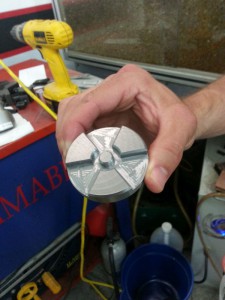I’ve been wanting to write this post for a long time. I think about it every time we get a call or email from someone who wants to talk about an application that’s a little “outside the box” or just making contact to learn more about what we do. The conversation always follows a similar pattern through which they explain what’s needed and I get to offer advice based on my experience, or lack there of, with that type of work. Every time I think I’ve heard it all, I’ll get a call for something completely new. It’s a fascinating world we live in and a great time to be a scientist. That brings me to my point, these callers always seem surprised that when they call, the phone is answered by someone who is technically knowledgeable, at least familiar with the science and quite happy to talk at length about their needs. I tell them all the same thing, “This isn’t just a job, we live for this stuff.”
CNC machining is a relatively small part of what we do at KSA and Texray, but it’s a personal hobby I enjoy quite a bit. I’ve cut many of these SS branding iron heads friends and charity auctions. They’re fun, not too complicated and really cool.




